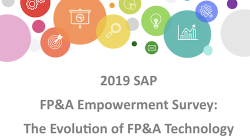There are arguably two main reasons for the Strategy-Execution Gap. The first is obvious: too much focus on short-term profits. The second is less immediately noticeable, but perhaps more deep-rooted: improper allocation of resources.
In this paper, we will explore these different areas to explain what they are, how they have benefited other organisations and the steps an organisation can take in making the transition.
Why are the KPIs an important component in FP&A? What can organisations do to design and build a robust KPI framework and deliver improved business performance?
Being adaptive to changes in the surrounding world and changing yourself is the only way to progress today. Continuous transformation of planning and analysis approaches becomes a lifestyle. Digital Transformation forms a fundamental part of it. At the same time, changes bring risks and the only way to manage them is to be prepared.
Corporate Performance Management (CPM) has long consisted in breaking the company’s strategy down into operational objectives and indicators, measuring the achievement of these objectives against operational entities' budget or forecast and take action on that basis. This approach was effective in a stable business environment, with slow and controlled changes.
In this uncertain, technology-driven world, we conducted a survey of global FP&A professionals to assess whether the work they do and the skill sets they employ are ‘good enough’.
Pagination
Subscribe to
FP&A Trends Digest

We will regularly update you on the latest trends and developments in FP&A. Take the opportunity to have articles written by finance thought leaders delivered directly to your inbox; watch compelling webinars; connect with like-minded professionals; and become a part of our global community.






